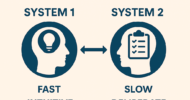It’s no surprise that doctors are prone to burnout, especially during residency training.
But, according to a study cited by Pauline Chen in a recent New York Times column, it’s part of the doctor-in-training culture. In fact, residents “from seven different specialties and found that they set themselves up for burnout by accepting, even embracing, what they believed would be a temporary imbalance between the personal and professional aspects of their lives.”
What happens if that imbalance isn’t so temporary? For instance, primary care doctors are reporting an increasing frequency of physician burnout, facilitated by the increasing bureaucratic hassles and the extra number of thankless hours they have to spend taking care of an unending number of patients.
Without a work-life balance, most doctors cannot be sustained by professional growth alone and “are at risk of burnout, clinical depression or, more commonly, subtle forms of stress,” and indeed, “the danger is that physicians may end up leaving the work force or will become less effective caregivers.”
And that’s exactly what you’re seeing in primary care today.


















![Antimicrobial resistance: a public health crisis that needs your voice [PODCAST]](https://kevinmd.com/wp-content/uploads/Design-1-190x100.jpg)

